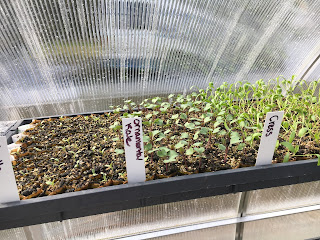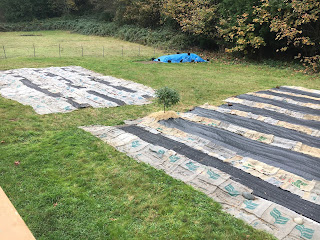I was about six years old when I started tending my first garden. Even then, I loved pulling away the chaotic weeds to make room for orderly groups of flowers and herbs, relishing that satisfying accomplishment of checking in later and seeing them flourishing.
Over the years, the gardens I've tended have gotten larger and more complex, to eventually include ponds, fruit trees, wide assortments of bulbs, roses, trellised vines, lush ground covers and, of course, vegetables. Does everyone enjoy the taste of home-grown tomatoes or strawberries warm from the sun?
Despite the increased sizes and complexities, I've consistently had the problem of running out of dirt. It's too hard to choose between a rose bush with vibrant yellow blossoms blending into deep orange edges and one with rich, purplish pink blossoms. Just get both. Find room somehow.
And then we moved to Oregon.
I remember our first spring, exploring the friendly, neighborhood nursery, with greenhouse after greenhouse burgeoning with plants of every size, shape, scent, and color. Oh, Lordy. Thank goodness for the cargo van waiting for me out in the parking lot.
 One variety that I brought home that was new to me was artichokes. I bought three, 4" pots and carried them up to the empty patch of soil that I thought would make the perfect home for them. THAT'S when I read the label advice. "Plant 5 feet apart." What!!!! That's ridiculous. How could they possibly fit? And then I looked around at the empty patch of soil and realized, no problem.
One variety that I brought home that was new to me was artichokes. I bought three, 4" pots and carried them up to the empty patch of soil that I thought would make the perfect home for them. THAT'S when I read the label advice. "Plant 5 feet apart." What!!!! That's ridiculous. How could they possibly fit? And then I looked around at the empty patch of soil and realized, no problem.I'd also picked up some bare root strawberries, which I'd never heard of before. They were on sale for $2/bundle, so of course I bought 3 bundles. As I untied the first bundle, I again read the label advice. "Plant 1 foot apart." It also said, "25 plants." What!!!! I had 75 plants that needed to be planted 1 foot apart? I looked around at the still-waiting patch of soil stretched out next to the new artichokes. Actually, no problem.
 |
| Ahimsa on the front lawn |
So we're migrating over from gardening into something larger: Farming. The thing is, I've spent 50-some years gardening with a trowel. And hand clippers, loppers, and rakes. I love the heft and power of a grub hoe, but that's as big and powerful as it ever got.
But you know what? It still works.
Our first summer, we tackled the overgrown blackberry briars, intertwined with hundreds of thistles and tall grasses that engulfed the upper third of our hillside. Our tools? A lopper and an electric hedge trimmer. Foot by foot, our little tools chipped away at the chaotic, waist-high thicket, and the contour of the hillside slowly emerged.
That was how we discovered that we had a pond. Who knew? But there it was, a full-fledged pond at the top of our property.
 |
| Dambara discussing calmness with the ducklings |
It was an entire summer of discovery. The pond has a dam. The formerly inaccessible pluot tree is actually peacefully poised on it's own little plateau. Another plateau overlooks the pond and is a perfect place to linger, with an expansive view of our beautiful valley. We uncovered lemon verbena and an entire, miniature stream, gurgling along the lower edge of our pasture.
Our tools? Every one of them was easily held in our hands.
Now, if we were trained as farmers, we probably would have borrowed a tractor and powered our way across the gentle contours of our hillside, wiping out everything in our path, tossing about new pasture seed, and getting the job done!
 |
| Big shovel Little shovel |
We have borrowed a tractor from time to time, for jobs that are mightier than our four hands. But for the most part, we wield scythe, lopper, rake, and yes, trowel to tame the chaos and nurture the beauty inherent in every inch of our hillside. By working with our hands, by using our own muscles and breath, surrounded by shining sun or drizzling grey, we feel a connection to the hillside that holds us on its flank. We become a part of all that is. We join the Whole.
















































